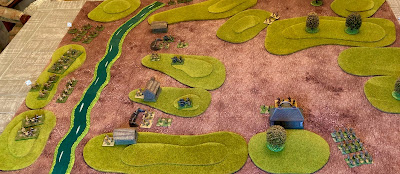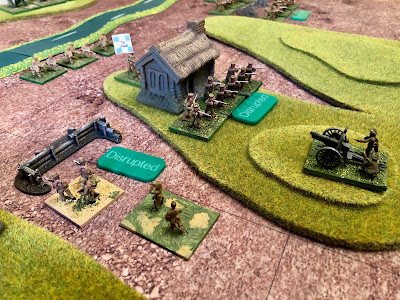I took a day off writing this week to play a game of Bloody Big Battles. An elegant ruleset that I should play more often allows battles to be fought on a grand tactical scale with 15mm figures. Having recently read Salvation and Catastrophe, a detailed study of the Greek-Turkish War 1919-23, I was keen to try that conflict on the tabletop. I was moved to action when the author of the Bloody Big Balkan Battles supplement for these rules (Konstantinos Travlos) kindly sent me a draft of a scenario he and his collaborator, Onur Buyuran, have written for the early stages of Battle of 1st Inonu.
The Greek-Turkish War 1919-23 attempted to expand the Greek state to include Greek populations in Anatolia, taking advantage of the Ottoman defeat in WW1. An army landed in the predominately Greek city of Smyrna (modern Izmir) and advanced towards the newly formed Turkish Grand National Assembly forces, led by Mustafa Kemal (later known as Ataturk). The Turks withdrew, causing the Greeks to extend and protect their lines of communication.
The scenario for this game deals with a reconnaissance in force by the Greeks to test the Turkish defences along the approaches from Bursa/Prusa towards Eski-Shehir on 28 December 1920 to 10 January 1921. I do like a centenary! The Greek force consisted of elements of two divisions, which were not ordered to occupy Eski-Shehir itself, instead the town of Inonu was the operational objective. The Turkish forces were commanded by Ismet Pasha (later to become the Turkish President and take this battle as his surname). The Turks had similar numbers of men but fewer machine guns and artillery.Complete victory for the Greeks by the end of move 8, who will be celebrating with the captured raki stores in Inonu tonight.






Thank you so much for the playtest!
ReplyDeleteFascinating war, but I am a bit confused by the AAR. Maybe it's just me but...
ReplyDeleteyou state "This is the tabletop at the start of the game with the Turks entrenched on the west of the stream and the Greeks forming up in the east."
Looking at the photo, to me the Turks are holding east of the stream and the Greeks coming from the west.
Thanks!
Thanks for spotting that, I will change it. This demonstrates why I am rubbish at naval games when I can't manage the points of a compass!
DeleteVery nice AAR, thanks, Dave!
ReplyDelete